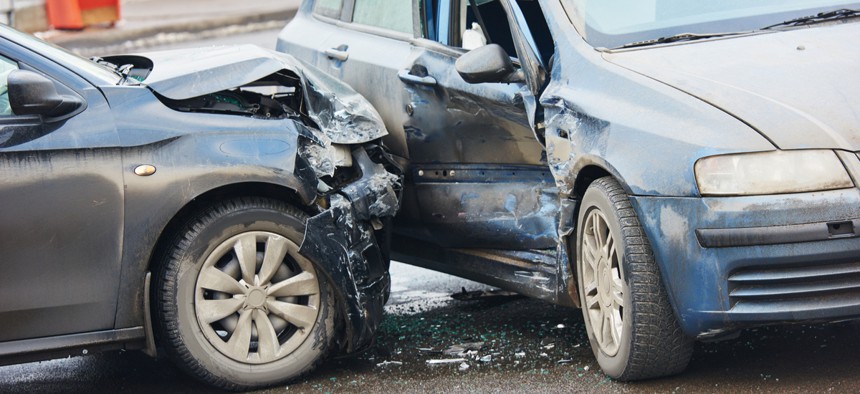How Data Analytics Could Help the Government Reduce Traffic Deaths

Dmitry Kalinovsky/Shutterstock.com
A D.C.-based startup with roots in the insurance market is using machine learning to predict the probability of car crashes on just about any stretch of road.
Imagine having all the ingredients for a delicious soup but no pot to cook them in—that’s where most governments currently find themselves when it comes to traffic data.
Despite collecting immense amounts of information on driving patterns, car crashes, road conditions and other traffic trends, transportation departments from the federal to local level have trouble making use of their data.
With just a smattering of basic traffic data, the D.C.-based startup ODN can help cities and states predict when and where car accidents are most likely to occur within their borders. Officials could use that information to direct safety efforts at the stretches of road where they’ll have the biggest impact, ODN Founder Carey Anne Nadeau told Nextgov.
Founded in 2015, the company aims to use data to kickstart a field largely stalled in the days of intuitive policymaking.
Today, ODN’s biggest clients are insurance companies, which use the tech to set rates for their customers. Providers have historically relied on credit scores, demographics and other personal information to price their policies, but that method puts young drivers, women and people of color at a disadvantage while failing to account for the actual risk people face on the road, Nadeau said. People who drive on the busiest, most congested roads are going to be more likely to get in a crash than someone who sticks to side streets, but that extra risk doesn’t show up in a credit score.
Many insurance companies already collect customers’ location data, and with ODN’s tech, they can determine whether and how much danger they face on the specific roads they use, according to Nadeau.
“[Insurers] have a lot of information about where you are, they just don't know if you're driving on unsafe roads,” she said. “We're attaching our customers to those road segments. They already know where you drive—now they can profile the risk around you.”
But the company has also found a market in the public sector, where officials are increasingly turning to data to inform their decisions, she said. Last year, ODN partnered with Chicago to advance the city’s Vision Zero initiative, and the company is currently finalizing deals with other U.S. cities, Nadeau said.
On March 10, Nadeau will present the company’s tech to a panel of mayors in a $10,000 pitch competition at SXSW.
Most transportation officials today rely on a “spray and pray” approach when it comes to traffic safety, she said, but the ODN platform could help them better target their efforts. Understanding where and why accidents occur could inform decisions on where to build speed bumps, dispatch traffic cops and reconstruct roads, and ultimately lead to safer streets, said Nadeau.
“Our goal is over time to actually measure the impact of any intervention that the city takes,” she said. “Did it actually have the impact we intended, did it prevent crashes, did it save lives? Those are the measures largely missing from [safety] initiative[s] today.”
Though most transportation policies are set at the state and local level, Nadeau said the tech has potential applications in the federal government as well. Understanding common causes of traffic accidents could help agencies make smarter, safety-conscious investments in the country’s aging infrastructure, she said, and integrating federal data into the platform could make it more widely applicable to different areas of the country.
The Transportation Department has recently upped its investment in analytics and machine-learning technologies that can help officials better understand nationwide traffic trends. By offering a more holistic view of traffic safety, the tools can lead to more nuanced and effective safety policies, Derek Kan, the agency’s undersecretary for policy, told Nextgov.
“If you can marry some of these [datasets] together you can unlock tremendous value,” Kan said in a November interview. “[It’s] sort of like bringing electricity to the fire age.”






